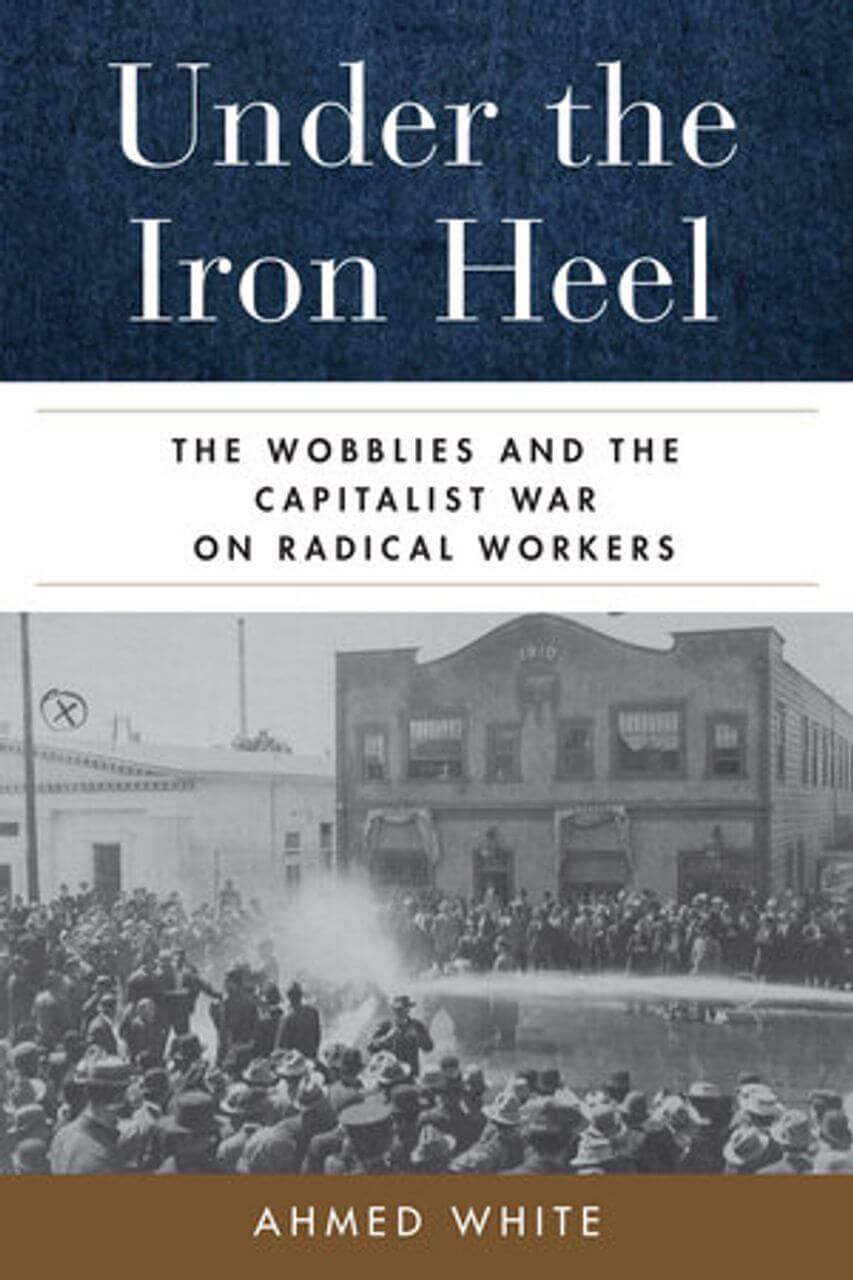Ahmed White recently published Under the Iron Heel: The Wobblies and the Capitalist War on Radical Workers. It takes a closer look at the legal and extralegal repression meted out against the Industrial Workers of the World, organized in 1905 as an industrial union committed to organizing all workers in opposition to the American Federation of Labor. The book is “the first comprehensive account of this campaign.” Randi Storch author interviewed him about his findings.
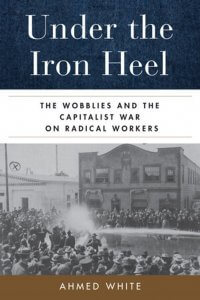
Storch: Your book, Under the Iron Heel: The Wobblies and the Capitalist War on Radical Workers, is a beautifully written history of the systematic destruction of this radical labor movement. Why did you choose to focus on the Industrial Workers of the World?
White: I determined to write this story when I realized that the Wobblies’ story had not been adequately told. For all the great work on the history of the IWW, there was not really any comprehensive study of what the union faced in the way of repression. I had written a little on this topic over the years and decided I would try to give it a proper treatment. Another reason I wrote this book is that I found in these workers’ experiences some things that are uniquely instructive about what repression really is, how devastating it can be, and how it mainly does its work. I had long been interested in these issues, which have seldom received the attention they deserve, whatever the context, and I saw this as an ideal occasion to explore them. Beyond all of this, was something more visceral about my motivations. When I began this book, I figured that in the IWW’s record of fortitude and tragedy, of courage and defeat, I would find something unsurpassed in this country’s history. And I wasn’t disappointed.
Your title refers to Jack London’s The Iron Heel. Why is his work such a fitting metaphor and reference for yours?
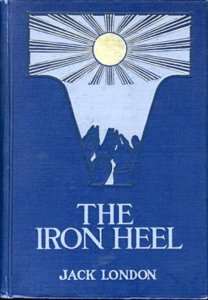
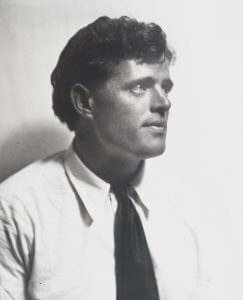
Like a lot of people on the left, in my youth I was much influenced by the writings of Jack London. And the more I worked on this book the more evident it became that I could not fully understand the IWW without considering his influence on the union—and, for that matter, I could not understand Jack London without considering the IWW’s influence on his thinking and writing. This seemed particularly true of The Iron Heel, a great dystopian novel whose narrative was inspired by the Wobblies’ fate and then, remarkably, came to be a kind prophesy of what happened to the union a decade or so after it was published. There was also the fact that London went further than any famous person in endorsing the commitment to militant direct action that would define the union’s identity and its fate. And whatever his views on socialism near the time of his death in 1916—there remains some uncertainty about where he stood and why—some of London’s frustrations with the Socialist Party aligned with the Wobblies’ rejection of both the spirit of compromise and the faith in electoral politics that came to characterize mainstream socialism in the 1910s. It is for these reasons that the union eulogized London as an “IWW man” and that I decided I could not write this book without also focusing on him.
Your book is a fundamental critique of progressive reformers and liberalism. How does your history of the IWW upend liberal ideals in this period of US history and liberal histories of the IWW?
If nothing else, I think the story I tell should refute any notions that somehow what happened to the IWW was primarily the work of conservatives or reactionaries. At every level—federal, state, and local—the repression the union faced was just as apt to be organized by progressives as by any other elements. This isn’t to say that all progressives were hostile to the IWW. Some dissented from this position in the name of civil liberties and principles of tolerance, or because they broadly sympathized with the union. But then again, so did some conservatives. In any event, the progressives’ substantial role in persecuting the IWW seems to make clear the importance of understanding progressivism, no less than neoliberalism, in terms of its adherents’ class interests and values and only their ideological commitments or sentimental pronouncements. The Wobblies’ certainly understood this. So did Jack London, for that matter.
Your study is full of individuals committed to undoing the evils of capitalism. Who are some of the most interesting people you studied in the IWW?
I did try to bring to light the experiences of people who were not so prominent in the union, people whose only notoriety, as I say in the book, came with their persecution. One of these people who readily comes to mind is a man whose story starts and ends the book: Joe Neil. Never any kind of leader in the union, Neil was an immigrant and a migratory worker who had been arrested several times because of his membership in the IWW before being convicted of criminal syndicalism in a Kansas court in 1922. He served six years, which was the longest stretch that anyone was imprisoned for that crime. The people who came to know Neil in prison, including his lawyer, a remarkable woman named Caroline Lowe, were astonished by his quiet and simple faith in radical industrial unionism and his concern for his fellow inmates. When Neil got out he was, like a lot of Wobblies, proud of his sacrifices and still defiant. But this was 1928 and by then there was not much of a union left for him to return to, and so he drifted away.
Neil’s story is the definition of courage and tragedy. But it was hardly unique. Among the book’s characters are many others with similar stories. There’s James McInereny, for instance. One of a boatload of Wobblies who were attacked by police and vigilantes in Everett, Washington in 1916, McInereny was injured in that bloody affray and then, with over seventy other Wobblies, faced murder charges for what happened that day. Three years later he was nearly lynched and then wrongly convicted of murder for helping defend a union hall in Centralia, Washington against a violent mob. McInereny wasn’t any kind of leader, either. He was just an everyday Wobbly who suffered mightily for the cause of radical industrial unionism. He died in prison in 1930, a few months before he would have been released.
There were also hundreds of IWW defendants who refused offers to avoid prison or receive some kind of clemency if they renounced the union, who refused to leave prison without their fellow IWWs or some kind of absolution, who volunteered to be prosecuted, and who, in one case, offered to serve, in addition to his own sentence, the one that a federal judge was about to impose on another defendant. Needless to say, I couldn’t tell all these stories. I couldn’t even learn much about most of them, such is the nature of these things. I think it’s for that reason, this inability to know, that these stories will always haunt me and that this book will always seem incomplete.
Your chronology extends from the early 20th century, before World War I and the Red Scare, to the mid-1920s. Each chapter uncovers some aspect of the systematic destruction of individual activists and the IWW as an organization. What were the most important forces and institutions behind the destruction of radicals and radicalism in this period?
At the head of the campaign to break the IWW were powerful capitalists, concentrated in the western two-thirds of the country, in industries where, by 1917, the IWW was making considerable progress in organizing workers. Specifically, this meant agriculture, construction, mining, oil, and timber. These capitalists were allied with influential politicians, some, as I suggested earlier, quite progressive in their views, and many of them strongly committed to labor reforms. Among these politicians were prosecutors of various ranks, police officials, state legislators and governors, U.S. Representatives and Senators, and President Woodrow Wilson himself. In fact, Wilson’s Justice Department and military were as important as any institutions in destroying the union, as they were particularly successful in representing the IWW’s strikes and its revolutionary rhetoric as proof of its seditious threats to the war effort and prosecuting it accordingly.
At every turn, this campaign was also supported by judges, too. They not only reliably oversaw the prosecutions of hundreds of Wobblies and seldom did anything to impede their convictions but also, in the case of appellate judges, seldom found any fault at all in a system that equated membership in the union with guilt.
On top of all of this, I think it was the IWW’s misfortune to emerge as the institutional embodiment of nearly everything that was menacing about the left and the working class in this, a time of extraordinary upheaval. It is significant in this regard that “IWWism” became a kind of universal shorthand for condemning socialists, anarchists, and unionists who had nothing to do with the union.
Finally, I think it’s important to see in the persecution of the IWW a crucial moment in the development of the modern, liberal state and its legal system, and particularly in their capacity for coercive, legally authorized social control. Although especially true of the federal government, whose police functions expanded dramatically in the late 1910s and early 1920s, the overall effect was widespread. And not only did the capacity for social control expand, but so did the means by which it could be justified and rationalized in progressive terms. Radicals and dissidents of all types have been living with this ever since.
You also argue that the IWW is a cautionary tale for today’s labor movement. How so?
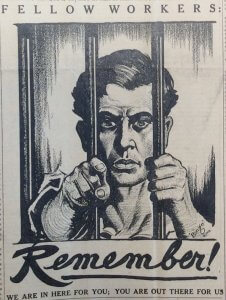
For me this is a story about the outer limits of civil liberties and political tolerance in societies, like ours, that are generally politically lenient and not always anathema to labor and other social reforms. I may be wrong, but I find it very difficult to reflect on what happened to the IWW and its members without thinking that the moment any other union or a political movement of any kind really represents a significant threat to American capitalism is the moment it, too, will be broken in the same way. Of course, it’s been a century since the IWW was destroyed and a lot has changed. But ours is still in every way a capitalist society, one that vests in the hands of today’s capitalists the same basic interests, the same essential values, and the same kind of raw power that got the IWW essentially declared a criminal organization. This is why I think it likely that revolutionary unionism, if it ever resurges in this country, will probably again be treated as a serious crime.
On a similar note, I think this story offers a lesson in what it means to be the object of serious repression. It has been a very long time since unionists have been in this position in any sustained way—maybe since the last days of Third-Period Communist unionism. As my account of what happened to the IWW makes clear, the price that people paid for trying to change the world by organizing workers has been extreme. I suppose that anyone who aspires today to be a revolutionary unionist should be prepared to pay this price, like Joe Neil or James McInereny.
Now that your book is published, what books are you looking forward to reading?
I’m afraid I have quite a backlog of things to read. At the front of the line is Vilja Hulden’s new book, The Bosses’ Union. I’ll soon start on Mary Heaton Vorse’s novel about Gastonia and Shelton Stromquist’s new book on municipal socialism.


